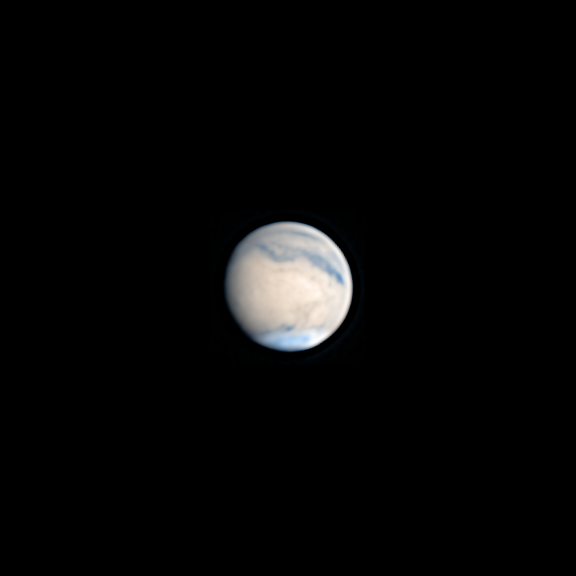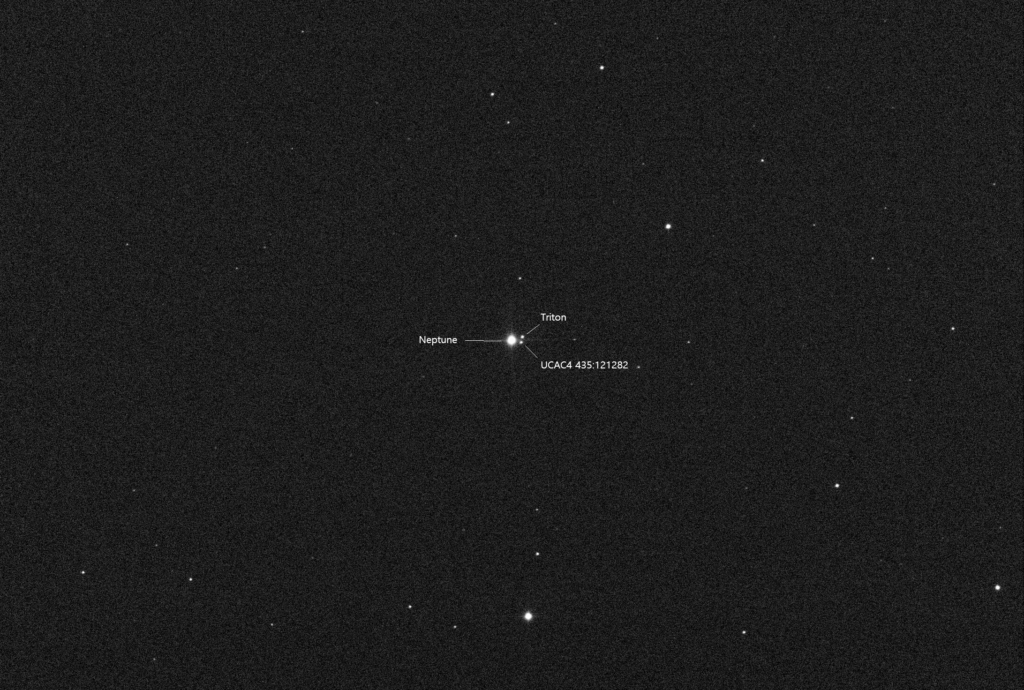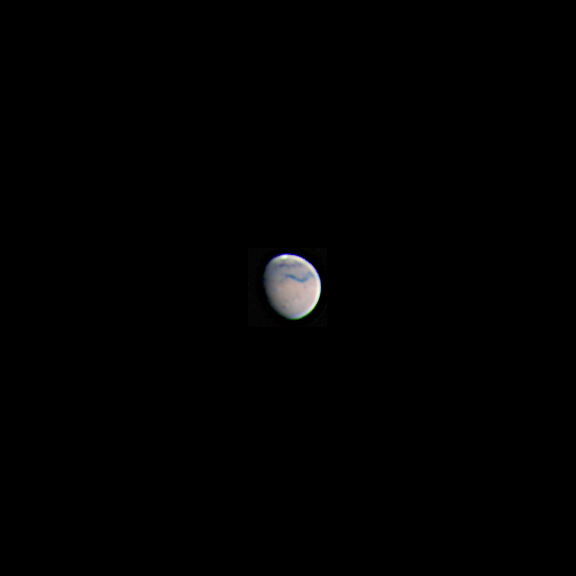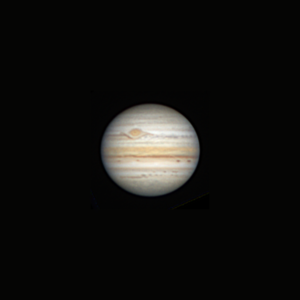The seeing tonight was much steadier than the last time I took a look at Mars. This of course led to much finer detail being visible. Once again, the clouds covering the northern polar ice cap are very obvious. You can identify several additional surface markings using the Mars map on the PTO web page. The central meridian is 1.8° but you must remember the image is south at the top unlike the map. Right now Mars is coming out of its winter season with the spring equinox just around the corner on the 26th of December.
Mars is finally rising above my tree line a little earlier in the morning. The seeing has been fairly poor the last couple of days but it has settled down enough to get some useful pictures. The prominent blue feature on the northern limb of the planet is seasonal cloud cover over the north polar ice cap. This cloud feature is known as the north polar hood and is often seen forming in Mars’ early autumn and may last until late spring.
As usual, south is at the top. If you want to identify any of the surface features using a Martian map, the image’s central meridian is 179.2°.
I finally got around to processing some non-asteroid data (the weather has not cooperated for several days). I took this image on the evening of the 29th of July.
Even at roughly 3 billion miles Neptune is bright enough that I had to take a short image (5 sec) to prevent over exposure. As indicated, one of the bright objects immediately to the right of the planet is Neptune’s largest moon Triton.
Triton is the 7th largest moon in the solar system (our moon is fifth on the list). Triton is somewhat unique in that it is in a retrograde orbit which supports the current theory that it is likely a captured Kuiper belt object. Imagery taken during Voyager 2’s flyby in 1989 shows a very thin atmosphere and active cryovolcanism in the form of nitrogen geysers.
Mars is just rising early enough to clear the trees and still be in relatively dark skies. As usual, this image matches the view in the telescope with south at the top. Mars just passed its winter solstice on the 21st of July.
Click here for a full explanation of the exposure data.




